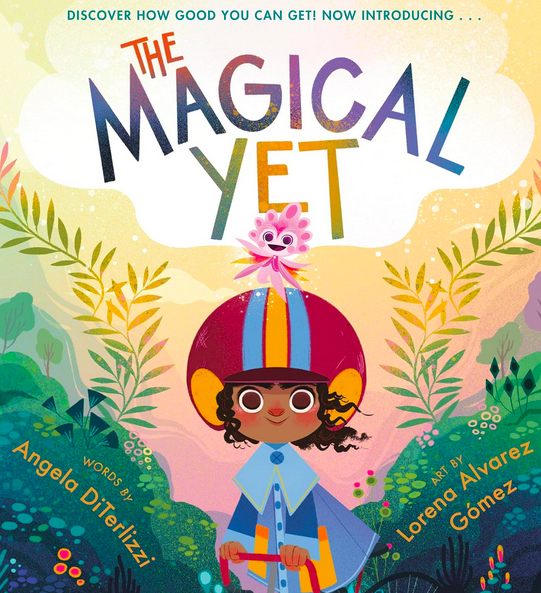Why am I Still Writing Pages- Bibliotherapy with Teens
Many parents know the joys of using picture books with young children. Whether it is the bedtime reading routine or a rain day bonding activity, reading with kids can be a fun and connective experience. Using picture books with teens may seem like an odd choice, but I have found that many teens enjoy the same connective benefits that they remember from storytimes past.
These books are not just for elementary school classrooms or for circle time. They can serve as powerful conversation starters and openings for self-reflection. The visual elements and relatable narratives found in picture books can resonate deeply with teens, creating a safe and non-threatening space for exploration.
One key advantage of using picture books in bibliotherapy with teens is the ability to tackle complex emotions and themes in a digestible, beautiful, and fun format. These stories act as mirrors, reflecting the diverse range of experiences teens navigate, validating their emotions, and fostering a sense of connection that can combat isolation.
Bibliotherapy often involves selecting books that align with the specific needs of each client. By offering choices, teens are empowered to participate actively in their therapeutic journey, encouraging autonomy and self-discovery. During sessions, we often discuss and reflect on the themes presented in the books and how those themes may connect to our own experiences. This dialogue serves as a bridge between the fictional world of the book and the real-life experiences of the teen. Through this process, teens can gain insights into their own thoughts and emotions, fostering a deeper understanding of themselves and their challenges.
Bibliotherapy with picture books can also allow teens to build a toolkit of coping strategies. As they encounter characters overcoming obstacles and finding resilience, teens can internalize these lessons and apply them to their own lives. The metaphorical language of the stories provides a framework for discussing coping mechanisms, self-care practices, and positive decision-making.
The combination of bibliotherapy and picture books with teens can be a great support in journeys of self-discovery and resilience. These beautiful and poignant books often inspire meaningful conversations, promote emotional well-being, and empower teens to navigate the challenges and complexities of adolescence with confidence.
Below are some recommendations of picture books that I have found helpful when working with teens.
-Sticks by Diane Alber
Amazon Link
This is a great story all about overcoming adversity and finding your way. A leftover stick from a melted Popsicle starts out upset and anxious about ways they don’t fit in to the world around them. Through connecting with others, Stick finds their unique strengths. This book is an excellent starting point for conversations on kindness, empathy, perseverance, and identity. This story is also great for teens going through transitions, such as starting or graduating high school, starting with a new school, or having shifting family dynamics. There are supplemental activities with this book that some teens enjoy too.
-The Magical Yet by Angela DiTerlizzi
Amazon Link
Most children have been exposed to the growth mindset taught in many Social-Emotion Learning (or SEL) programs or curriculum. Growth mindset can be helpful when learning new math concepts or vocab words, and also can be applied to challenges outside of a school or academic setting. The Magical Yet explores the excitement and the anxieties of the unknown. This story is an excellent entry point to discussions of changes, self-image, and the power of resilience.
-When Things Aren’t Going Right, Go Left by Marc Colagiovanni
Amazon Link
This is a great story about dealing with stress and overcoming challenges. The message of this book also fits into discussions of growth mindset and the strengths of being flexible. A great opener for further connection on anxiety, frustration, and the looming transition into adulthood that many teens face.
-Perfectly Pegasus by Jessie Sima
Amazon Link
This story is a beautiful way to tackle the prickly conversations of peer conflict and seeking fulfilling friendships. Many teens respond to the themes of loneliness, self-worth, friendship, and connection. This book is part of a delightful series, but I keep going back to this one due to the endless connections clients can make with the friendships and peer connections in their own lives.
-Love, Z by Jessie Sima
Amazon Link
Amazing book about love, inclusion, acceptance, what loves looks like, and how love feels to us. Many teens have a hard time navigating shifting dynamics with their family, friends, and themselves. This story is a great gateway to discussions of how who give and receive love and how love can impact us.
-How to Hug a Pufferfish by Ellie Peterson
Amazon Link
This book is a wonderful overview of setting and communicating physical boundaries. Many clients with sensory issues or a history of sexual trauma have connected with this story. This story can open conversations about boundaries, communication, expressing love and affection, and how friends can support us in our unique needs.
-Enemy Pie by Derek Munson
Amazon Link
A enemy to friends tale about working through conflict and emotions. This story can be great for teens coping with peer conflict or navigating changes in their friend groups or dynamics.
-One by Kathryn Otoshi
Amazon Link
Feelings can get really big sometimes. This book is excellent at showing emotions in a simple and approachable way. This story can open conversations on emotional expression, how others may experience our emotions, and how we can process our emotions and find connection.
Story time doesn’t have to remain in elementary school. Bibliotherapy through picture books can open a dialogue about the specific challenges or emotions teens may be facing. Using fun and beautiful picture books can be a creative way to connect on emotional well-being, promoting self-discovery, and building resilience.
Click below to learn more.









